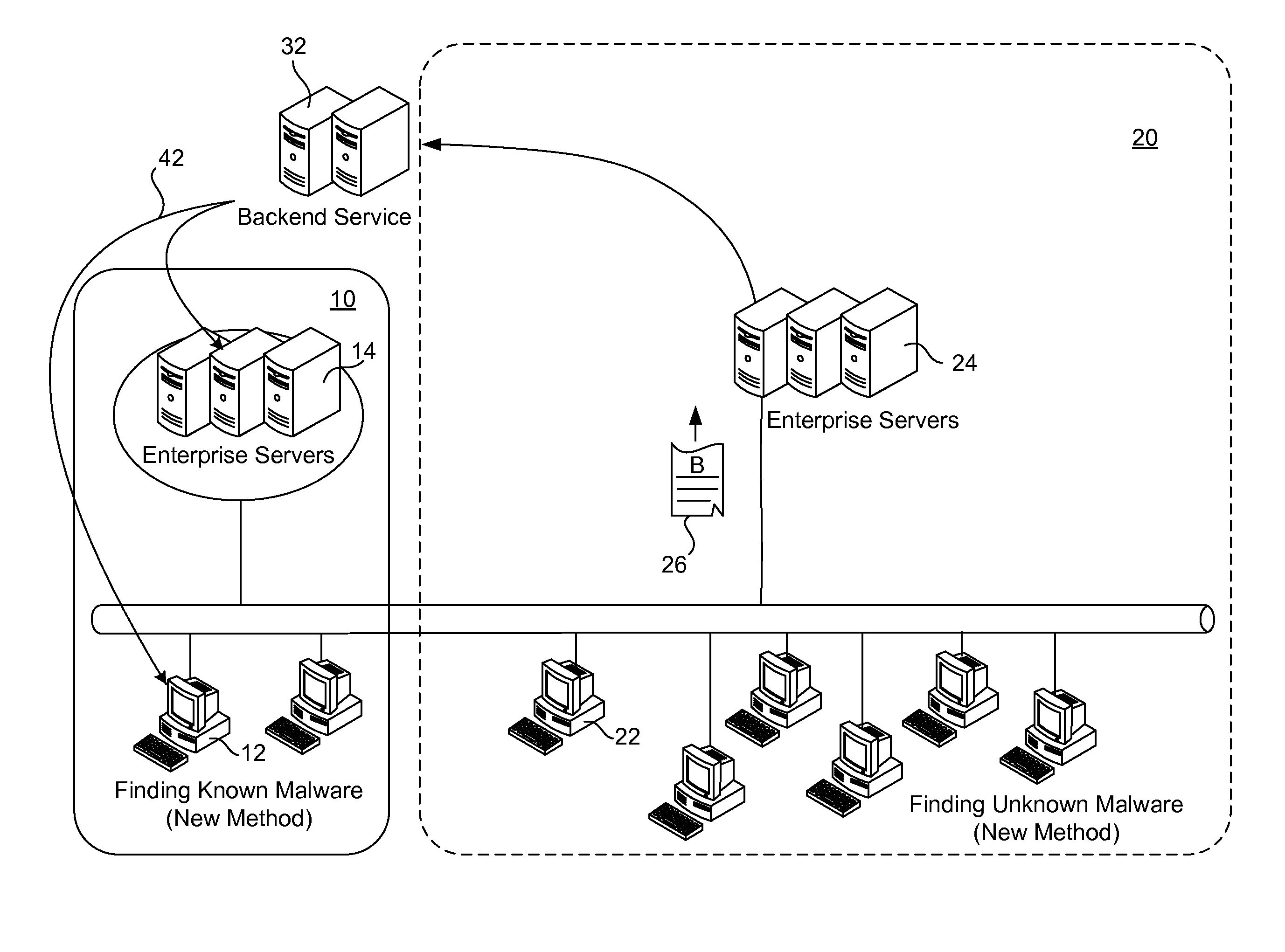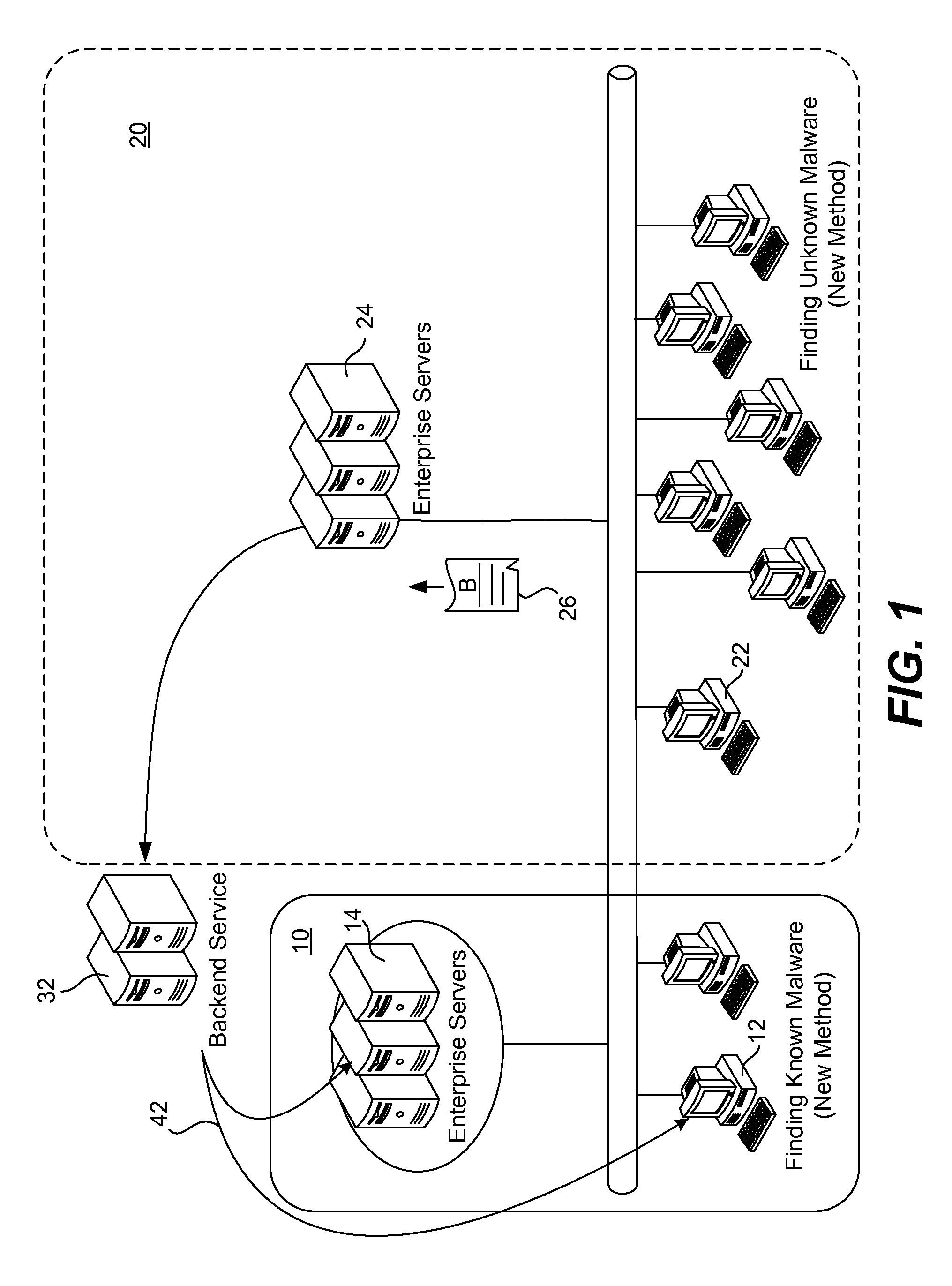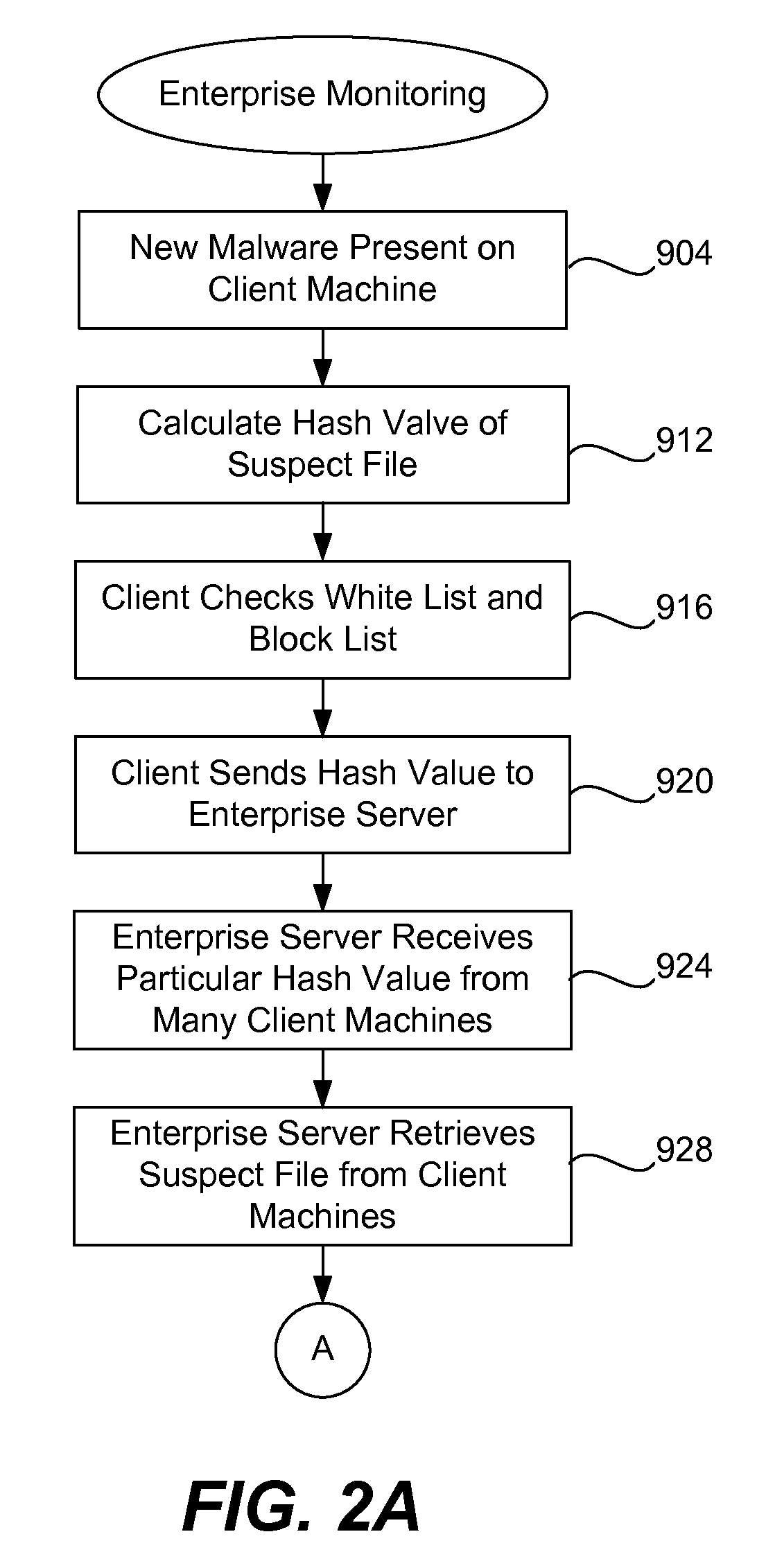Zero day malware scanner
a malware scanner and zero-day technology, applied in the field of malware detection, can solve the problems of examining the original raw files, consuming a lot of time and resources, and affecting the detection speed of malware researchers, and achieve the effect of faster detection speed of suspicious samples
- Summary
- Abstract
- Description
- Claims
- Application Information
AI Technical Summary
Benefits of technology
Problems solved by technology
Method used
Image
Examples
Embodiment Construction
[0021]FIG. 1 illustrates examples of both prior art 10 and the new approach 20 to malware detection. Under the prior art current method, a file A is detected on a client computer 12 within an enterprise and the client computer determines that this file is on the blacklist. Accordingly, the CRC of this file is sent from the client computer to an enterprise server 14. The enterprise server then sends the scanning results back to the client computer. In this example, it is necessary for a signature for file A to be known and to be on a blacklist at the client computer.
[0022]In order to monitor the statistics of each given file, the present invention utilizes a central server 24 for monitoring and collecting client machine activity within some organization 20. The central server 24 also performs malware scanning. On the client side, a filtering mechanism is used to prevent sending out unnecessary information to the central server. For example, a white list and a black list is maintained...
PUM
 Login to View More
Login to View More Abstract
Description
Claims
Application Information
 Login to View More
Login to View More - R&D
- Intellectual Property
- Life Sciences
- Materials
- Tech Scout
- Unparalleled Data Quality
- Higher Quality Content
- 60% Fewer Hallucinations
Browse by: Latest US Patents, China's latest patents, Technical Efficacy Thesaurus, Application Domain, Technology Topic, Popular Technical Reports.
© 2025 PatSnap. All rights reserved.Legal|Privacy policy|Modern Slavery Act Transparency Statement|Sitemap|About US| Contact US: help@patsnap.com



